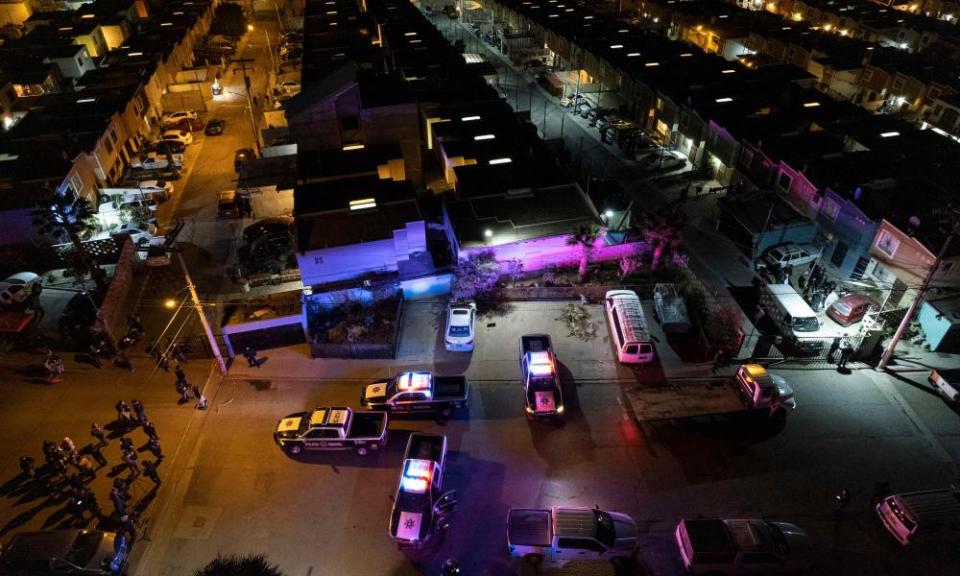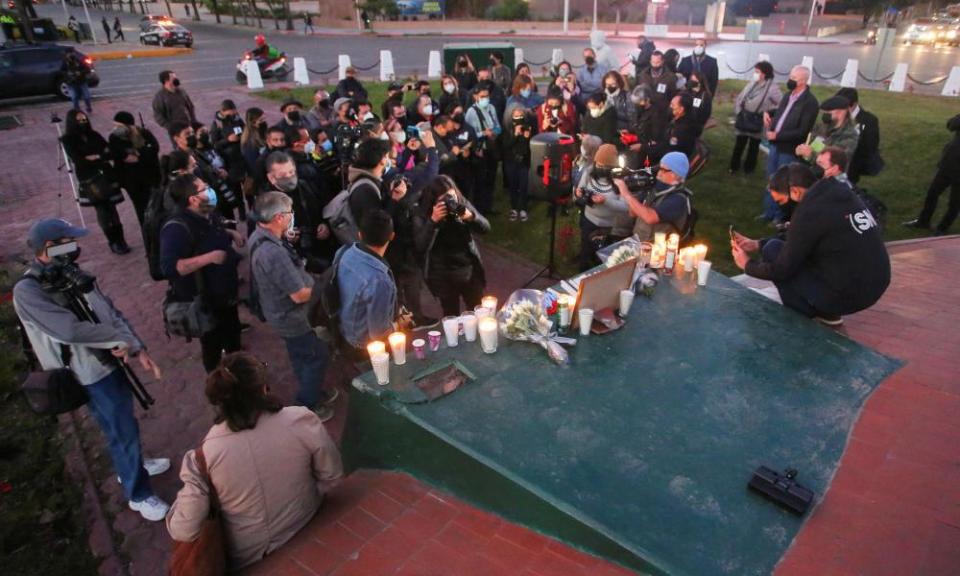Third Mexican journalist killed this year as press corps faces murder crisis

Three years ago reporter Lourdes Maldonado López stood up before Mexico’s president at a press conference and told him: “I fear for my life.”
On Sunday she was gunned down in the city of Tijuana – the third Mexican journalist to be killed this year in what is a deepening murder crisis facing the country’s press corps and its populist leader, Andrés Manuel López Obrador.
Maldonado, a former journalist for Mexico’s biggest network, Televisa, was reportedly shot in her car outside her home at about 6.20pm.
Related: Two journalists exposing Mexico’s corruption and drug violence murdered within one week
“This cannot be happening. Fuck!” tweeted Manuel Ayala, another member of Tijuana’s tight-knit journalism community, as news of the shooting spread.
Maldonado’s killing came less than a week after the murder of another veteran local journalist, the photographer and crime reporter Margarito Martínez. Martínez, 49, was shot dead last Monday – also outside his Tijuana home – for reasons that remain murky. Days earlier another journalist, José Luis Gamboa, was fatally stabbed in Veracruz state.
Activists say nine Mexican journalists were murdered last year and more than 50 have been killed since López Obrador took office in 2018.

The trio of murders have stunned Mexico’s beleaguered press corps – particularly in Tijuana, the scene of two of the crimes. On Friday friends and relatives buried Martínez in the Mexican border city before holding a public protest. “The hardest thing was covering the crime scene of a murdered friend. I never thought this would happen,” photographer Omar Martínez told the local news group Cadena Noticias.
Maldonado, whose shooting is still being investigated, made headlines in March 2019 when she publicly spoke out over a long-running dispute she was having with a former employer – a media outlet owned by a powerful regional politician and media boss called Jaime Bonilla Valdez – which she accused of wrongful dismissal.
At one of López Obrador’s regular “mañanera” press conferences, Maldonado asked for his help resolving the situation with Bonilla, who is a member of the president’s political party, and said she feared for her life. López Obrador, who is best known as Amlo, asked one of his communications chiefs to look into the accusation and offer support. Last week it was reported that the media outlet had been ordered to pay Maldonado restitution.
There is no suggestion of a link between the work dispute and her killing, but the fact that she had publicly voiced concern over her safety – and subsequently was murdered – drew widespread attention after Sunday’s attack.
The media freedom group Article 19 said Maldonado had been included in a protection scheme for journalists as a result of threats she had received while covering issues such as politics and corruption.
Addressing reporters on Monday morning, López Obrador recalled the journalist’s 2019 plea but claimed it had not been “a matter of threats or violence”.
“What has to happen in Mexico for journalists to be able to operate safely and freely?” one reporter asked Amlo, whom activists accuse of doing little to halt violence against the press.
Mexico’s president called for “a fairer and more humanitarian society” but sought to shift blame for the bloodshed onto the “rotten” neo-liberal legacy, which he said meant he had inherited a “profound social, economic and moral crisis”.
“We are coming out of this period of decay and violence,” Amlo insisted. “Corruption, inequality and violence – this is what they left us.”

 money
money 